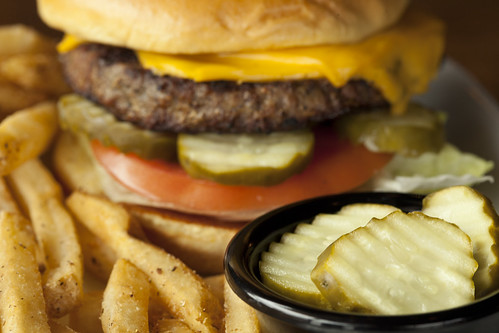
This post is part of the Science Tuesday feature series on the USDA blog. Check back each week as we showcase stories and news from USDA’s rich science and research portfolio.
Pickles are a popular food, but are even trendier today as more and more craft brands show up in stores and farmers’ markets all over the country. But did you know USDA’s Agricultural Research Service (ARS) has helped commercial pickle-makers, from small brands to the nation’s largest, meet the highest standards of food safety?
While pickling—storing in an acid liquid, usually vinegar—has been recognized as a food-preserver since long before the discovery of bacteria, the kind of data that today’s precise food safety standards require was not established until recently.
In the late 1990s, incidents of bacterial contamination in acidic foods like unpasteurized orange juice and apple cider, which are the same pH as pickles, alerted the U.S. Food and Drug Administration (FDA) that pathogens, such as Salmonella and Escherichia coli O157:H7, survived at more acidic pH levels in juices than previously believed—leading to new juice regulations. It also raised collateral questions about these pathogens in acidified foods, such as pickles, and prompted FDA to issue draft guidance applicable to the pickle industry.
Even though there haven’t been any food-borne illnesses from commercial pickles in 50 years, no one knew exactly how to reach the 99.999 percent reduction in bacterial pathogens FDA now considered appropriate. This also needed to be done without hurting the quality or taste of pickles.
It was a job for the researchers at the ARS Food Science Research Unit in Raleigh, North Carolina, the only national laboratory that works full time on the processing of commercial pickled vegetables. Every type of pickle and pickled vegetable would require its own study and set of numbers.
With significant support and funding from the pickle industry, the first ones the lab tackled were the pasteurized pickles—dill, bread and butter, sweet, sour, gherkin, kosher—the ones that pretty much dominate the grocery store aisles. They found it took less than 1.2 minutes at 160°F (71°C) in brine at pH 4.1 to reach the 99.999 percent reduction level.
Then the scientists moved on to the acidified, shelf-stable pickled vegetables like peppers and okra, which do not undergo pasteurization because they would fall apart in the heat. These products are instead made safe through the combined bacteria-killing effects of low pH and high organic acid concentration.
Today, all U.S.-produced pickled vegetables—a multi-billion-dollar a year industry—are made following the standards set by the ARS Food Science Research Unit’s work.
This wasn’t the first time the lab revolutionized the pickle industry. For instance, John L. Etchells, the lab’s research leader from 1937 to 1975, improved the pickle fermentation process and reduced spoilage by such a significant amount that pickles became so much less expensive dill pickle slices became a standard accompaniment on hamburgers in restaurants everywhere, and today, they are 25 percent of the pickle market.



